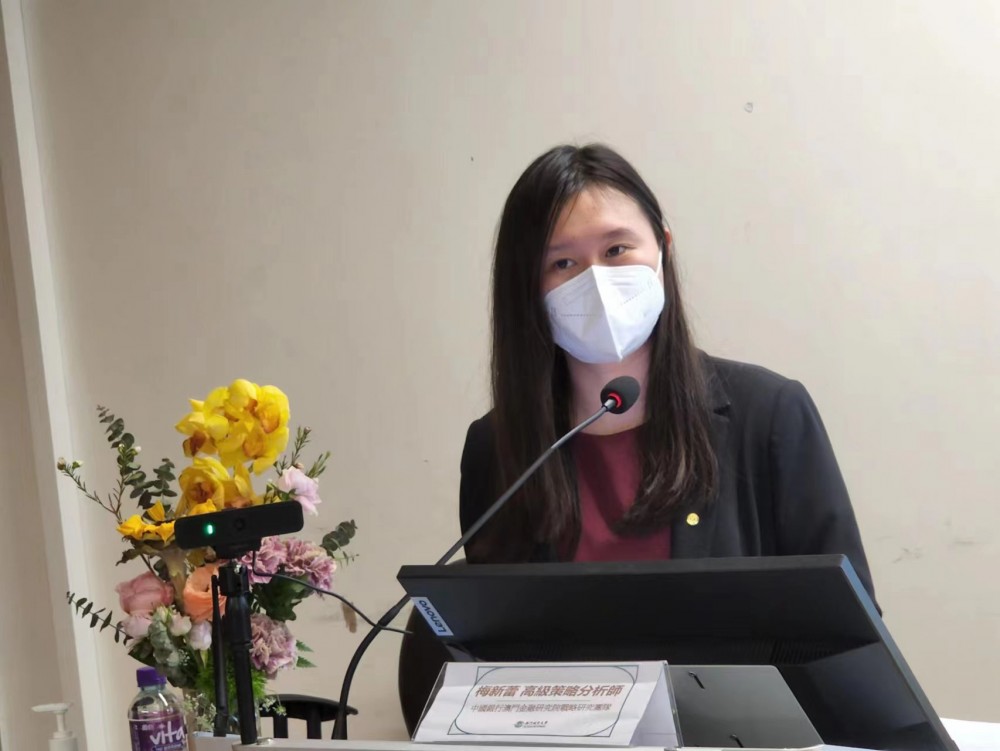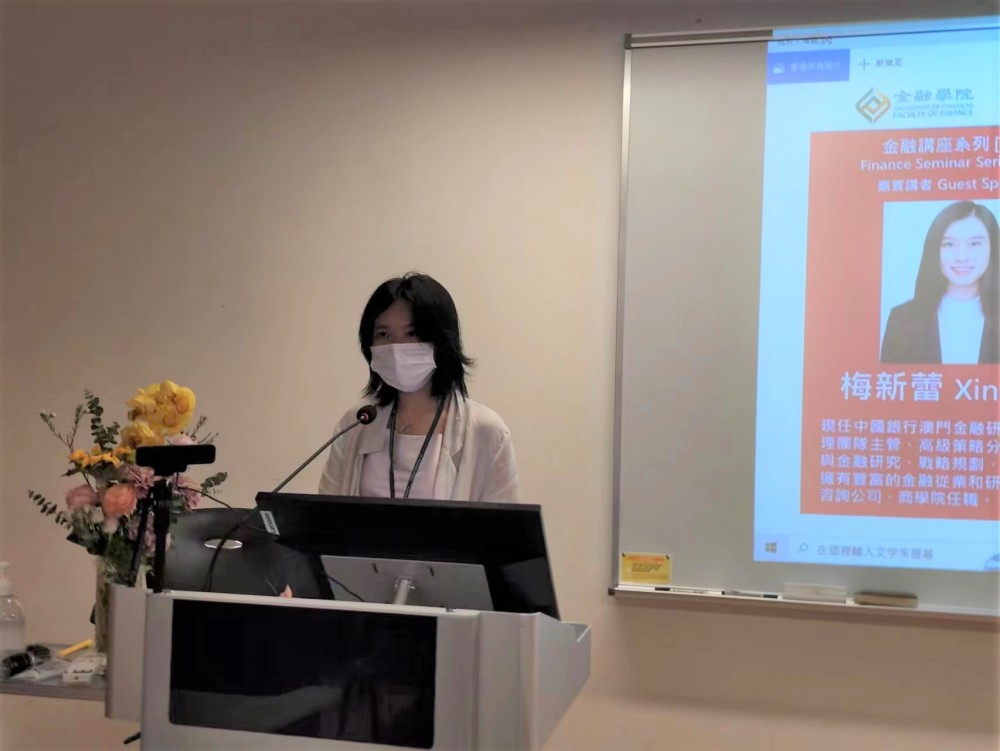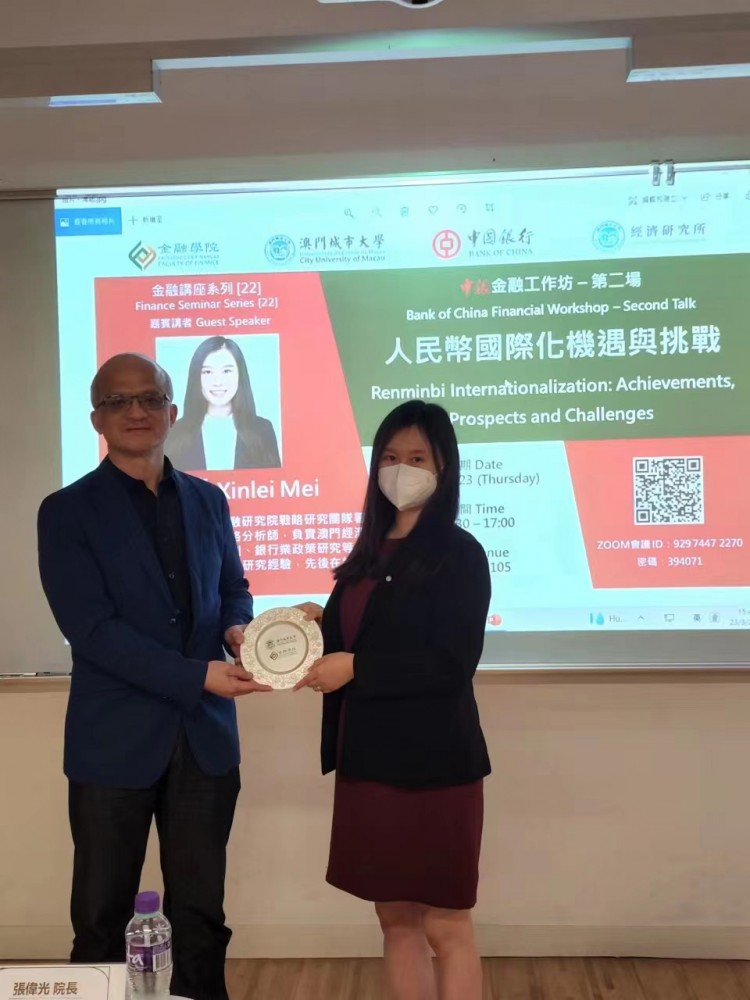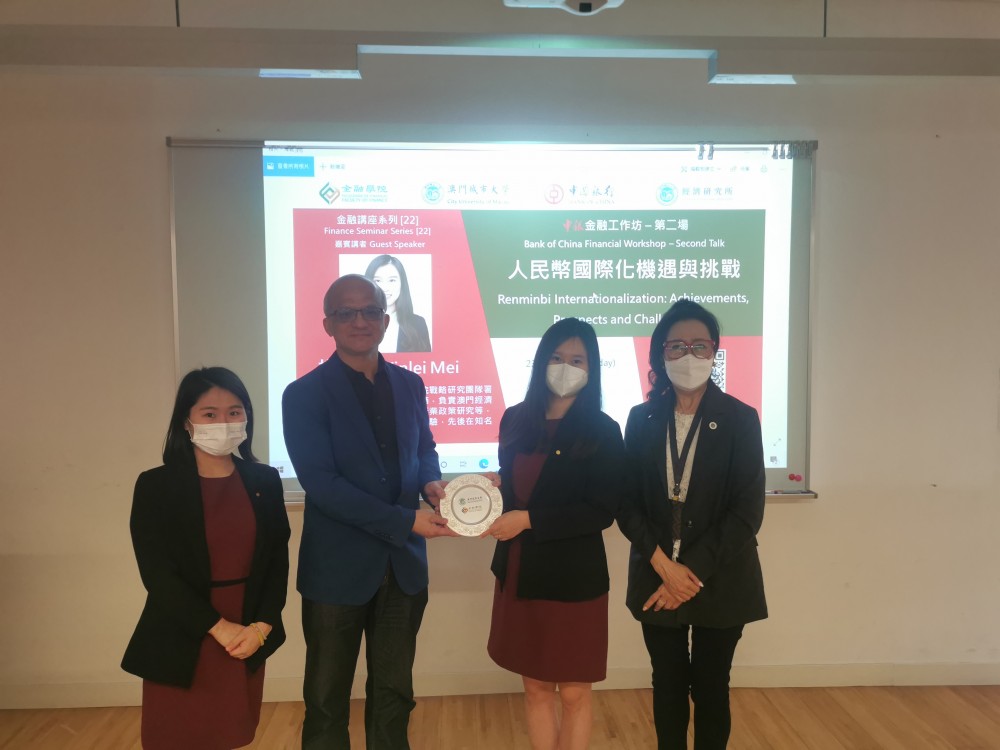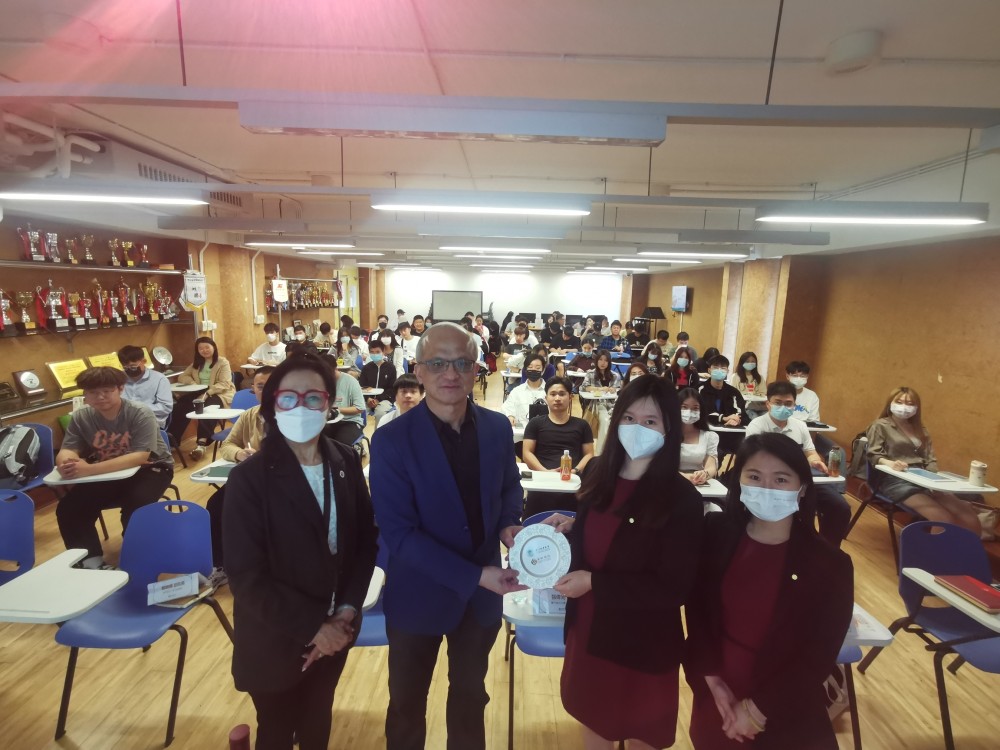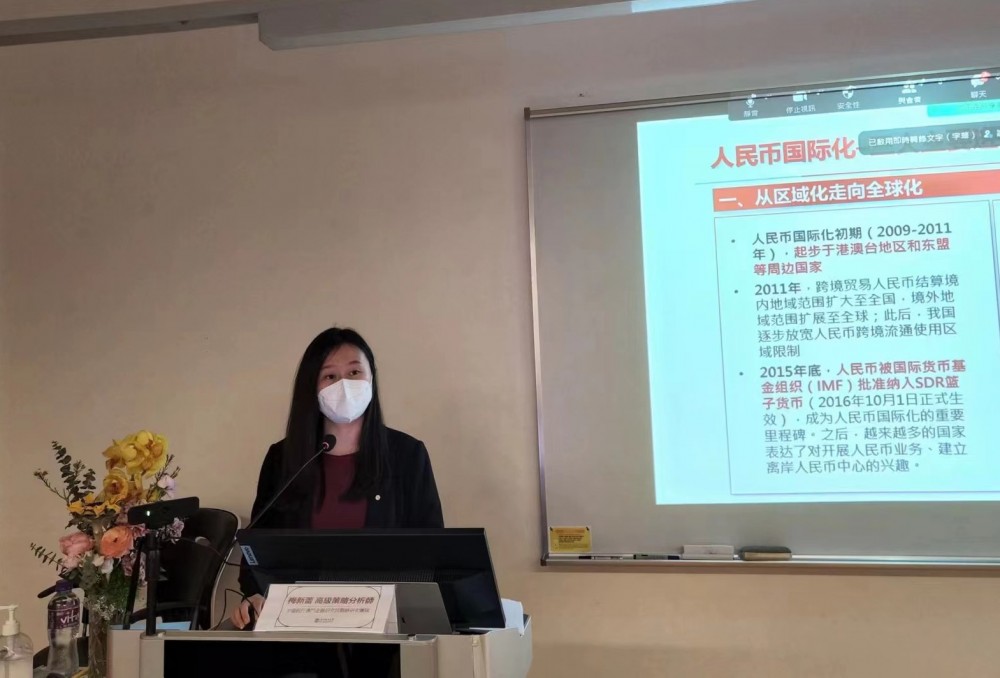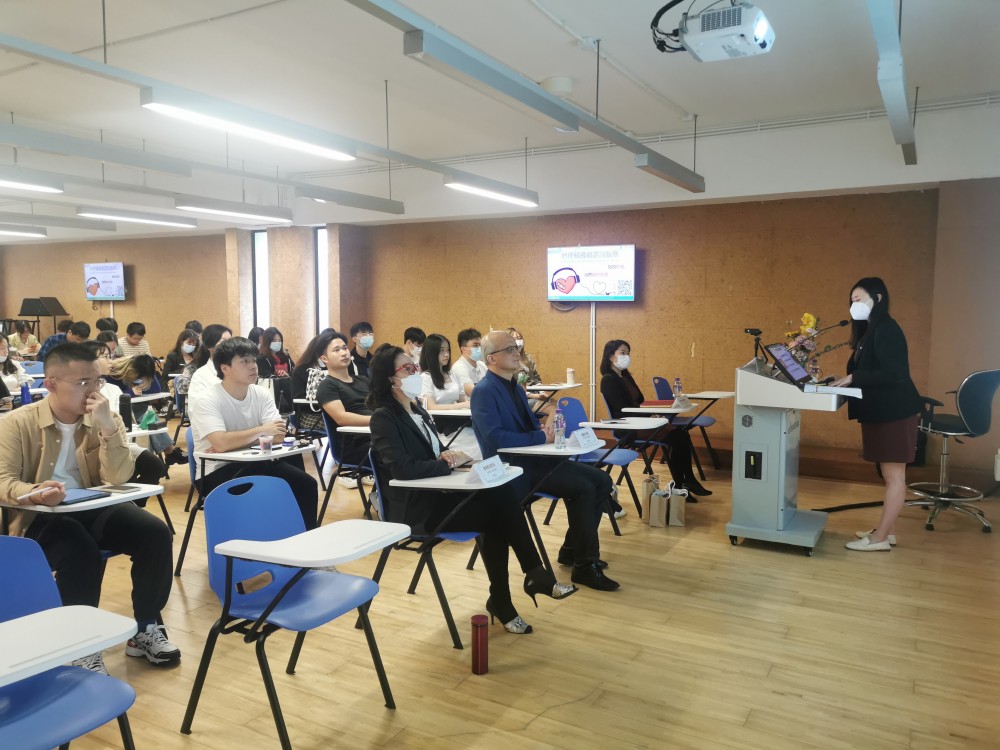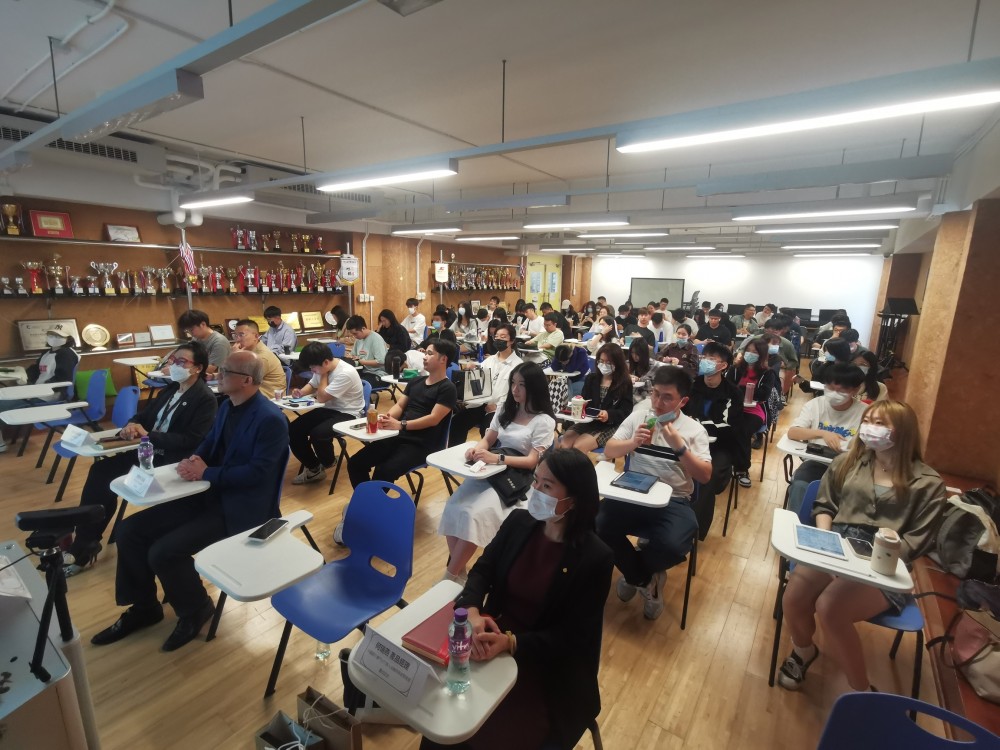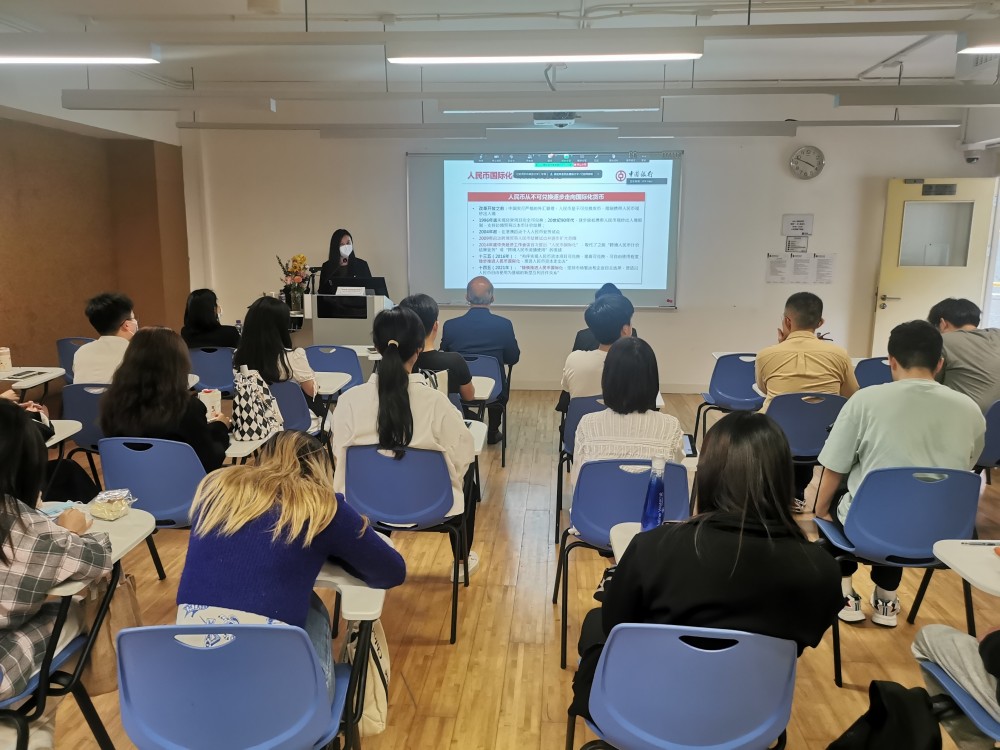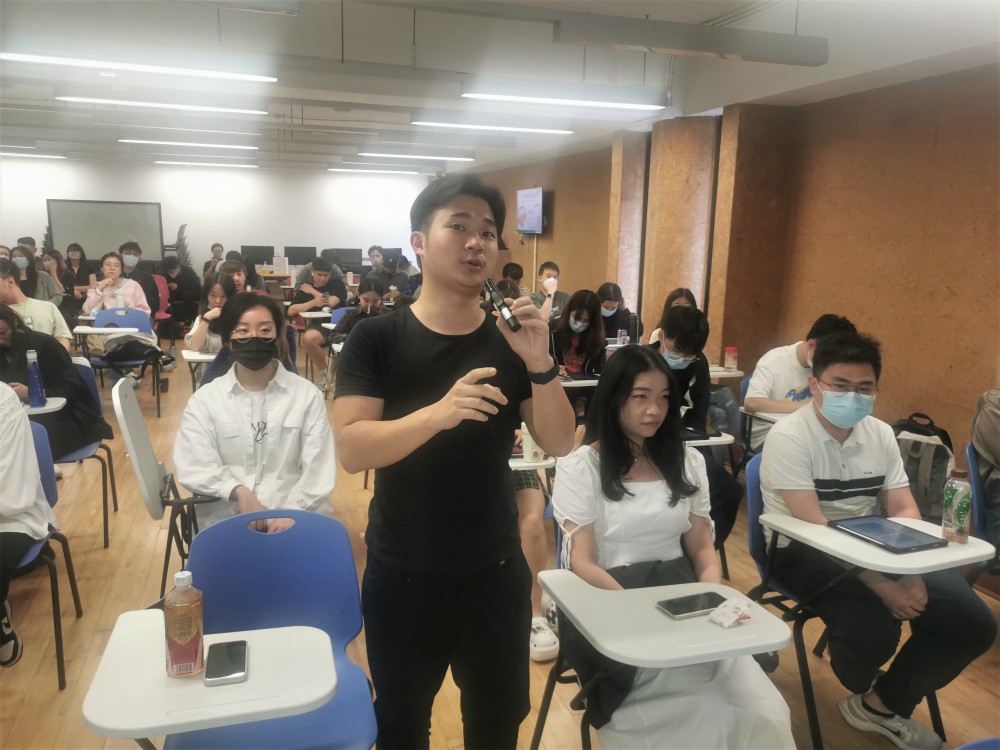On 23 March 2023, the Faculty of Finance of the City University of Macau held the Finance Seminar Series [22] Bank of China Financial Workshop – Second Talk at the Luso Chinese Building. Ms. Xinlei Mei, Senior Strategic Analyst in the Strategic Research Team of Bank of China Macau Institute of Finance, who is specialized in Macau economic and financial research, strategic planning and banking policy research, and has 8-year working experience in the financial industry and in well-known consulting firms and business school, was invited to deliver a speech titled “Renminbi Internationalization: Achievements, Prospects and Challenges”. Guests attending this seminar include Ms. Soi In Ho, Product Manager of the Integrated Marketing Division and Personal Banking and Channel Management Department, Dean Adrian Cheung and Associate Dean Eva Khong, City University of Macau.
Ms. Mei first gave the students a brief introduction to the development of Renminbi (RMB) internationalization. In 2009, during the international financial crisis, US dollar liquidity was sharply strained and the systemic defects of the global currency pattern were exposed. China launched the Trial Launch of Renminbi Settlement of Cross-Border Trade, which opened the curtain for the internationalization of RMB, and has experienced the full cycle test before, fluctuating under four stages. In the first stage, the People's Bank of China launched a trial of RMB settlement of cross-border trade in 2009, which was expanded to the whole country in 2011. In the second stage, from 2011 to 2014, cross-border RMB trade settlement increased rapidly, and the proportion of RMB settlement reached a peak. In the third stage, from August 2015 to 2017, the development pressure of cross-border RMB business increased due to the impact of the exchange rate, interest rate and regulatory policies. In the fourth stage, from 2018 to now, RMB denominated commodities and the capital market were opened up at an accelerated pace.
Ms. Mei pointed out that there are three major developments in the internationalization of RMB. In the early stage of RMB internationalization. It started in Hong Kong, Macau, Taiwan, ASEAN and other neighboring countries, and truly achieved the transition from regionalization to globalization; Before 2015, the internationalization of RMB was strictly controlled onshore and driven by the offshore market. After the 811 reform of exchange rate, the direction and intensity of RMB internationalization were adjusted, and the internationalization of RMB was driven by both offshore and onshore wheels; International currency should play the functions of unit of valuation, store of value and medium of exchange between residents and non-residents. China adheres to the market-driven premise and makes key breakthroughs in the cross-border use of RMB in key areas and key entities, and cultivates the RMB settlement habits of market entities, so that RMB will become a currency of valuation and a reserve currency from a settlement currency.
Ms. Mei put forward the prospect and suggestions of RMB internationalization under the new situation. The Chinese government is committed to promoting the internationalization of the RMB in an orderly manner in a market-driven and independent way. The strategies of RMB internationalization in different regions should be different. For manufacturing countries and regions, such as Germany, Japan and South Korea, trade deficit and direct investment surplus models can be adopted. For resource-dependent countries and regions, including the Middle East, West Asia and Australia, the mode of trade and direct investment deficit can be adopted to achieve the "Petro Yuan" cycle by focusing on export and using financial pipelines to return or precipitate overseas. For traditional developed countries and regions, including the United States and the European Union, it is difficult and uncertain to promote RMB. For the “Belt and Road” countries and regions, including ASEAN, South Asia, Central and Eastern Europe, Africa and Latin America, RMB will be exported through trade, direct investment and other channels to carry RMB in the construction of large-scale projects and industrial parks.
Macau has established a relatively complete RMB clearing infrastructure and support measures and regulatory guidelines for overseas RMB business. Macau's financial industry is also equipped with the professional level and innovative ability to carry out all kinds of RMB business in an all-round way. Macau's modern financial construction has unique advantages in seizing the opportunities of RMB internationalization, including institutional, geographical and policy advantages. In terms of development direction and suggestions, Ms. Mei proposed that starting from cultivating and developing overseas RMB asset trading platforms, a securities market denominated and settled in RMB should be gradually constructed; Through the central government's enabling, seize the opportunities of cross-border RMB development, and actively promoting the development of Macau bond business with RMB bond as the main body; To continue to enrich cross-border RMB related products and services with the focus on financial cooperation between Hengqin and Macau, and provide "two-way" convenience for Macau enterprises and residents to integrate into the Greater Bay Area and for mainland enterprises and individuals to "go global".
At the end of the sharing session, the students took this valuable opportunity to actively pose questions related to the financial frontier, and Ms. Xinlei Mei answered in detail. In the Seminar, students paid attention to the development opportunities of RMB internationalization and its influence on the development of modern finance in Macau, and gained a lot through the financial seminar series. The students also expressed their expectations for the sharing of the next finance seminar.



